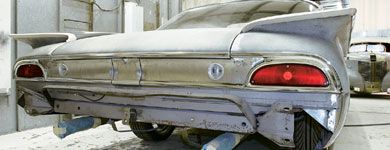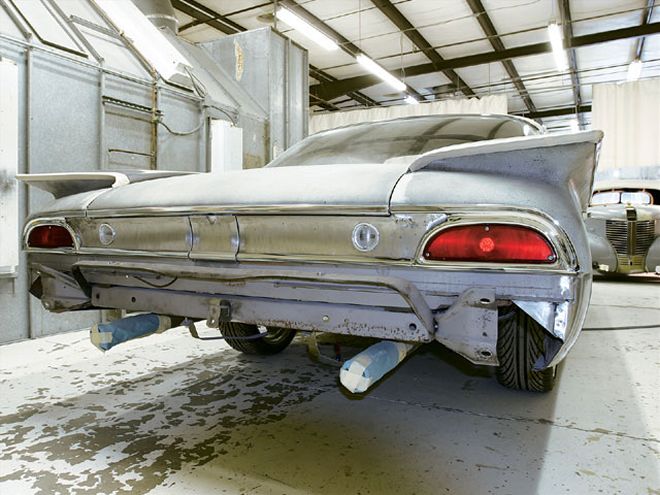
 Here's the paint-stripped rear panel of the Starliner that needed to be repaired. Notice the rusty, pockmarked area on the right-hand side near the taillight.
Here's the paint-stripped rear panel of the Starliner that needed to be repaired. Notice the rusty, pockmarked area on the right-hand side near the taillight.
We've done a number of rust prevention and repair stories in the pages of Street Rodder over the years, and it always remains one of the hottest topics on Internet forums and among chatter between hot rodders, restorers, and customizers alike. There are many different options when it comes to repairing rusted areas, from replacing the area completely with a patch panel to neutralizing the area with a chemical process, such as Por-15 or Eastwood's Rust Encapsulator. But, while the options to tackling such areas are vast, the goal remains the same: to treat the affected area so the rust does not return and cause future damage to the surface.
The procedures and processes used can oftentimes be fairly obvious as to what it's going to take to repair the area. For example, if cancer has set into the panel and it has literally eaten holes into the steel, it's fairly easy to assume that the entire area is going to need to be replaced with fresh material. There are, however, some instances where there's just a bit of surface rust residing on the surface of the steel after the paint, primer, and filler is stripped away. A quick pass with a wire wheel is sometimes all it takes to remove the rust and yield fresh metal. More often than not, though, the rust has had some time to attack the metal, leaving craters and pockmarks in the surface. If the damage is not too far gone, repairing these areas can be almost as easy as the steel wheel treatment.
We were getting in the way again recently at Cotati Speed Shop, where the crew had just begun the bodywork on Paul Boschetto's '60 Ford Starliner. The lower portion below the trunk and between the taillights suffered from a slight case of rust and the related pockmarking, but the steel itself was still in good shape and didn't warrant a patch panel. It was decided to use a spot blaster to attack the rust and clean out the pocked area, since a wire wheel wouldn't have penetrated into the small crevices or removed all the cancerous rust. Once all the rust was removed, the panel was then treated like any other area of the body, skimmed in filler, with the high and low spots addressed and prepped for paint. The treatment was simple, effective, and could be applied to any area of a body or chassis where rust exists but does not justify any further drastic actions.